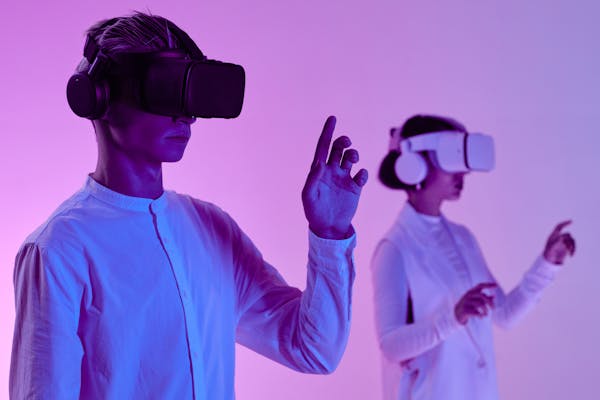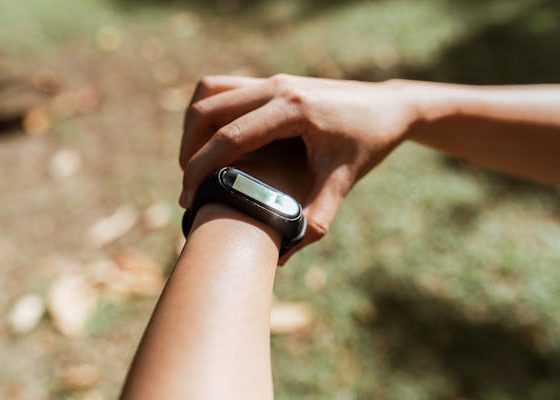
The evolution of wearable technology has been nothing short of spectacular. From humble beginnings as basic fitness trackers to the ubiquitous smartwatches, these innovations have seamlessly woven themselves into the fabric of our daily lives. But what lies beyond the horizon of this technological fashion frontier? Enter Smart Clothing 2.0, the next leap in the world of wearable textiles, where fashion, technology, and functionality converge in a revolutionary tapestry exploring the benefits of smart clothing.
The Benefits of Smart Clothing in Daily Life
Health and Fitness Tracking
One of the notable benefits of smart clothing lies in its integration with health and fitness tracking capabilities. These garments are designed with embedded sensors and technology that can monitor various physiological metrics such as heart rate, activity levels, and even sleep patterns.
Through seamless connectivity with accompanying mobile apps or devices, users gain real-time insights into their health and fitness status, facilitating informed decision-making regarding their lifestyle choices and exercise routines.
This fusion of fashion and technology enhances convenience and promotes a proactive approach to personal wellness, ultimately empowering individuals to achieve their health goals more effectively. Thus, the integration of health and fitness tracking features underscores the multifaceted benefits of smart clothing in enhancing both style and well-being.
Personalized Fashion Statements
Environmental Sustainability
Environmental sustainability is one of the key benefits of smart clothing, which encompasses garments embedded with sensors or technology to enhance functionality and comfort. By utilizing advanced materials and manufacturing processes, smart clothing reduces the environmental impact of traditional textile production and consumption.
These garments often promote energy efficiency by integrating features like temperature regulation or solar power generation, thus lowering overall resource consumption and carbon emissions. Additionally, smart clothing encourages longevity through durability and adaptability, reducing the frequency of disposal and contributing to a more sustainable fashion ecosystem.
Overall, the integration of technology in clothing not only enhances functionality but also aligns with the broader goals of sustainability, marking a significant advancement in the benefits of smart clothing.
Work and Productivity Enhancement
The Technology Behind Smart Clothing 2.0
Miniaturized Sensors and Electronics
The magic of Smart Clothing 2.0 lies beneath the surface. Microscopic sensors and electronics are intricately woven into the fabric, forming a seamless web of connectivity. These sensors can measure temperature, humidity, and even biometrics, providing invaluable data that enhances your life.
Advanced Fabrics and Materials
It’s not just about gadgets; it’s about the fabric itself. Advanced materials ensure comfort, durability, and functionality. From moisture-wicking textiles that keep you dry during intense workouts to materials that adapt to environmental conditions, smart clothing goes beyond traditional garments.
Connectivity and Data Transmission
These garments are not isolated islands; they’re part of an interconnected ecosystem. Smart clothing communicates with your devices, relaying data that you can access from anywhere. Imagine receiving a notification about your health on your smart glasses, thanks to your smart shirt.
Power Sources and Energy Efficiency
Power is the lifeblood of any technology, and smart clothing is no exception. These textiles have innovative power solutions, from flexible batteries to energy-efficient components. The result is a garment that can keep up with your active lifestyle without constant recharging.
Health and Wellness Applications
Monitoring Vital Signs
Smart clothing acts as a sentinel for your well-being. It tracks your vital signs, ensuring you’re always aware of your health status. It’s like having a health check-up 24/7, all thanks to your clothing.
Managing Chronic Conditions
For those with chronic health conditions, smart textiles are a lifeline. They provide continuous monitoring, ensuring early intervention when needed, and allowing individuals to manage their conditions effectively.
Early Detection of Health Issues
Early detection is often the key to successful treatment. Smart clothing can pick up subtle changes in health patterns, alerting you and your healthcare provider to potential issues before they become serious.
Promoting an Active Lifestyle
Smart textiles aren’t just about monitoring; they’re about motivating. These garments encourage an active lifestyle, providing feedback and incentives to keep you moving and making healthier choices.
Fashion and Style Revolution

Customizable Aesthetics
Your wardrobe is no longer static; it’s dynamic. You can change the color, pattern, and style of your clothing with a few taps on your smartphone. Express yourself with an ever-evolving fashion statement.
Adaptive Climate Control
Smart clothing adapts to your environment, ensuring you’re comfortable no matter the weather. It’s like having a personal climate control system sewn into your attire.
Augmented Reality Integration
Fashion is no longer confined to the physical world. Augmented reality has entered the scene, allowing you to experiment with clothing in a virtual space, or even try on different outfits without ever entering a fitting room.
Redefining Fashion Trends
Smart clothing isn’t just following fashion trends; it’s setting them. Designers are now incorporating technology into their creations, redefining what’s possible in the world of fashion.
Sustainable Fashion and Environmental Impact
Eco-Friendly Textiles
The fashion industry has long been criticized for its environmental footprint. Smart textiles are changing that narrative by utilizing sustainable materials and production processes, leaving a smaller carbon footprint.
Reducing Fast Fashion Waste
Fast fashion has consequences. Smart clothing offers an alternative by promoting durable, adaptable attire that doesn’t contribute to the rapid turnover of garments.
Recycling and Upcycling
The journey doesn’t end when your smart clothing reaches the end of its lifecycle. These textiles are designed with recycling and upcycling in mind, further reducing waste and environmental strain.
Carbon Footprint Reduction
By utilizing eco-friendly materials and optimizing production processes, smart clothing helps reduce the fashion industry’s overall carbon footprint, contributing to a more sustainable future.
Benefits of Smart Clothing in the Workplace

Enhanced Productivity
Safety and Hazard Monitoring
Smart clothing offers a multitude of benefits in the workplace, one of which is safety and hazard monitoring. Through embedded sensors and monitoring systems, smart clothing can detect various workplace hazards such as extreme temperatures, toxic gases, or physical strain on the body. This real-time monitoring enables proactive measures to be taken to prevent accidents or health risks, such as alerting workers to take breaks or providing early warnings of potential dangers.
By integrating safety and hazard monitoring into smart clothing, employers can enhance workplace safety standards, mitigate risks, and ultimately safeguard the well-being of their employees, thus exemplifying the benefits of smart clothing beyond mere attire.
Virtual Meetings and Collaboration
In the workplace, one of the significant benefits of smart clothing lies in its facilitation of virtual meetings and collaboration. Smart clothing integrates seamlessly with technology, enabling wearers to engage in virtual meetings with greater ease and efficiency.
This integration not only streamlines communication but also fosters a more inclusive and productive work environment, ultimately enhancing overall efficiency and teamwork. Thus, the integration of smart clothing into the workplace represents a significant advancement in enhancing virtual meetings and collaboration, highlighting the multifaceted benefits of smart clothing in modern work environments.
Employee Wellbeing
Employee well-being is significantly enhanced through the integration of smart clothing in the workplace, which aligns with the broader benefits of smart clothing. By incorporating sensors and technology into garments, employers can monitor various aspects of employee health, such as posture, heart rate, and activity levels, promoting a healthier and safer work environment.
The Future of Smart Clothing
Innovations on the Horizon
The future of smart clothing holds endless possibilities. Innovations such as conductive yarns, even more advanced sensors, and integration with other emerging technologies are just the beginning.
Integration with AI and Machine Learning
Smart clothing is set to integrate with artificial intelligence and machine learning, taking personalization and adaptability to unprecedented levels. Imagine your clothing learning your preferences and adapting in real-time.
Mass Adoption and Market Growth
Will smart clothing become as common as smartphones? The industry is poised for exponential growth as more consumers embrace the convenience and functionality of smart textiles.
Implications for Society
The widespread adoption of smart clothing carries profound implications for society, from redefining healthcare and fashion to the way we work and interact with technology. The fabric of our daily lives is set to change.
Conclusion
The journey into the realm of Smart Clothing 2.0 is just starting, and it promises to be an exciting and transformative adventure. These textiles aren’t merely garments; they represent a lifestyle. From enhancing health and wellness to revolutionizing fashion and workplace attire, the benefits of smart clothing are set to redefine our daily routines, our professional environments, and even our personal style choices. As technology seamlessly integrates itself into the fabric of our lives, the future appears more luminous and fashionable than ever. Keep an eye out for what lies ahead.






